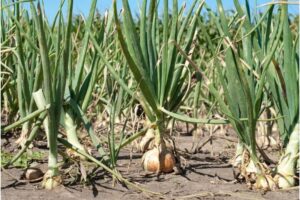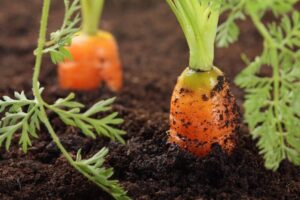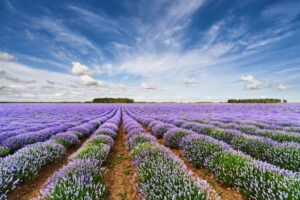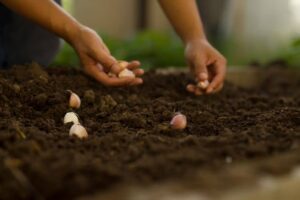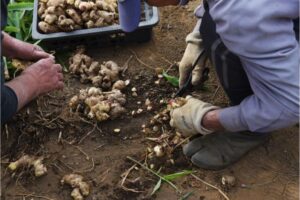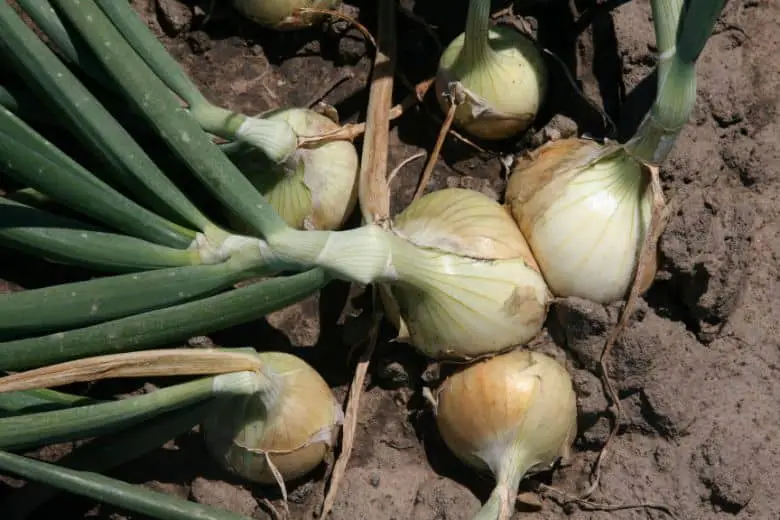
Walla Walla onions, named after Walla Walla county in Washington State, are known for their mild, sweet flavor compared to other onion varieties. This sweet onion was brought from Corsica to the United States in the late 19th century and has since become a beloved variety for many American gardeners and cooks.
Culinary Uses
Walla Walla onions are popular for their versatility in the kitchen. Their sweetness and mild flavor make them an ideal addition to salads, sandwiches, and roasts. Furthermore, they caramelise beautifully, adding a rich depth of flavor to a variety of dishes.
The Ideal Environment for Walla Walla Onions
The Perfect Climate
Walla Walla onions are cool-season crops. They are biennial plants that are often grown as annuals. These onions prefer a climate with cool winters and warm, dry summers. Therefore, knowing your region’s climate is key to successful Walla Walla onion gardening.
Soil Preference
Like most onions, Walla Walla onions thrive in well-drained, fertile soils with a pH level between 6.0 and 7.0. These onions can be finicky about their soil conditions, so it’s worth the effort to get it just right.
Getting Ready to Plant Walla Walla Onions
The Best Time to Plant
The best time to plant Walla Walla onions depends on your method of planting. If you’re using seeds, they can be started indoors about 8-10 weeks before the last frost date. If you’re planting sets or transplants, these should be planted in early spring, as soon as the soil can be worked.
Preparing the Soil
To prepare your soil for planting Walla Walla onions, start by clearing the planting area of weeds and other debris. Next, enrich the soil by adding compost or well-rotted manure. Remember to check and adjust the pH level if necessary.
Choosing Between Seeds, Sets, and Transplants
Choosing how to start your Walla Walla onions depends on your preference and resources. Starting from seeds is more cost-effective and offers the most variety, but requires more time. Onion sets and transplants, on the other hand, offer a quicker, albeit pricier, route to harvest.
The Process: How to Plant Walla Walla Onions
Step 1: Planting From Seeds
When planting Walla Walla onion seeds, sow them 1/4 inch deep and 1 inch apart in rows 12 to 18 inches apart. Water them lightly and keep the soil evenly moist.
Step 2: Planting From Sets
Plant onion sets 1 to 2 inches deep and 2 to 4 inches apart. They should be placed with the pointy end facing upwards. After planting, water the sets thoroughly.
Step 3: Planting From Transplants
When planting Walla Walla onion transplants, make a hole deep enough to accommodate the roots and place the plant in, covering the roots with soil. Space the transplants 4 to 5 inches apart.
Step 4: Nurturing Your Walla Walla Onions
Watering Guidelines
Walla Walla onions require regular watering. The soil should be kept consistently moist but not waterlogged. Overwatering can lead to root rot and other diseases.
Fertilization Tips
Feed your onions every few weeks with a balanced, all-purpose fertilizer. Avoid high-nitrogen fertilizers as they can cause lush foliage at the expense of the bulbs.
Weeding and Mulching
Keep the onion beds weed-free to prevent competition for nutrients. Applying a layer of mulch can help retain moisture, control weeds, and keep the soil cool.
Combatting Onion Pests and Diseases
- Common Onion Pests: Some common pests that can affect Walla Walla onions include onion maggots, thrips, and aphids. These pests can cause damage to the onion’s foliage and bulbs and must be managed promptly.
- Typical Onion Diseases: Onions can be susceptible to several diseases, including onion smut, downy mildew, and pink root. Good hygiene, crop rotation, and resistant varieties are key to preventing these diseases.
- Pest and Disease Prevention: Preventive measures include proper watering, well-drained soil, crop rotation, and regular monitoring of the plants for early detection of pests or diseases.
Harvesting Your Walla Walla Onions
- Signs of Readiness: You’ll know your Walla Walla onions are ready to harvest when the tops begin to yellow and fall over, usually in late summer.
- Harvesting Techniques: When harvesting, gently lift the onions from the soil using a fork, taking care not to damage the bulbs. Leave them on the soil surface to dry for a day or two.
- Post-harvest Handling: After harvesting, allow your Walla Walla onions to cure in a well-ventilated place away from direct sunlight. This will help them store better and extend their shelf-life.
Storing Walla Walla Onions
- Curing Process: The curing process involves drying the onions for a few weeks until the necks are completely dry and the outer skin is papery.
- Best Storage Practices: Store your cured Walla Walla onions in a cool, dry place with good ventilation. Avoid storing them near potatoes, as potatoes release moisture that can cause onions to spoil faster.
FAQs on Planting Walla Walla Onions
How long does it take for Walla Walla onions to grow?
Answer: It usually takes about 90-120 days for Walla Walla onions to reach maturity from transplants or sets. If you’re growing from seeds, it may take a few weeks longer.
Can I grow Walla Walla onions in containers?
Answer: Yes, Walla Walla onions can be grown in containers. Just make sure the container is deep enough to accommodate the onion’s roots and has good drainage.
Do Walla Walla onions require full sun?
Answer: Walla Walla onions prefer full sun, which means they need at least 6 hours of direct sunlight each day.
How often should I water my Walla Walla onions?
Answer: Watering frequency depends on your soil and climate, but generally, onions should be watered once or twice a week to keep the soil consistently moist.
What should I do if my Walla Walla onions start flowering?
Answer: If your Walla Walla onions start to flower, it’s known as bolting. This is often caused by temperature fluctuations. While the onion is still edible, it may not store well. It’s best to harvest bolted onions and use them right away.
Why are my Walla Walla onions not bulbing?
Answer: Several factors can affect onion bulbing, including daylight length, temperature, and nutrition. Walla Walla onions are long-day onions, meaning they need 14-16 hours of daylight to form bulbs.
Conclusion
And there you have it! By following these steps, you’ll be well on your way to enjoying your home-grown, mouth-watering Walla Walla onions. Now, how about that for a gardening victory?


